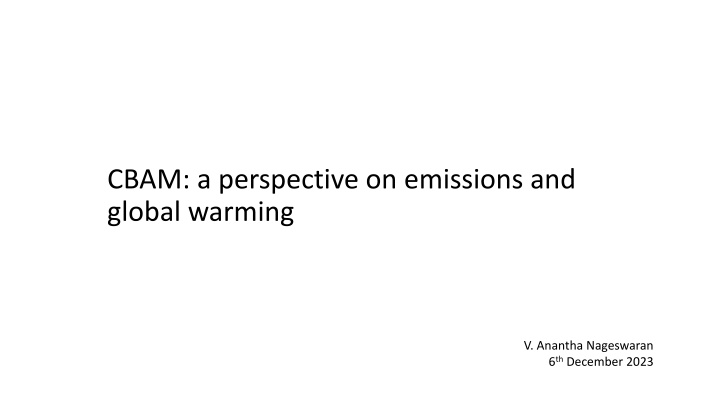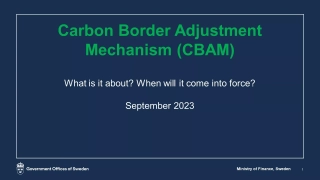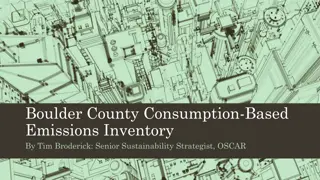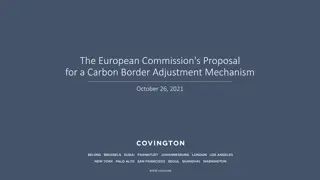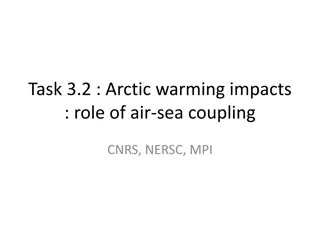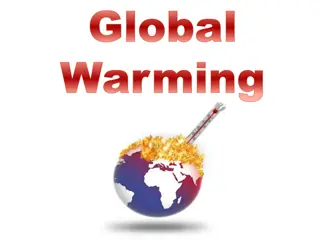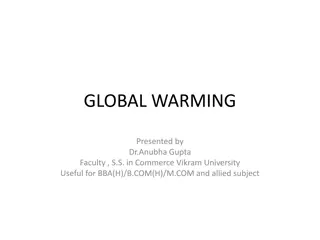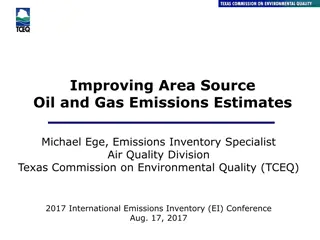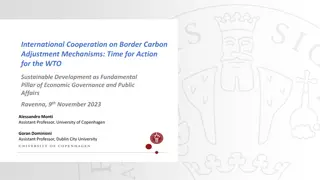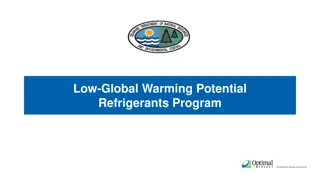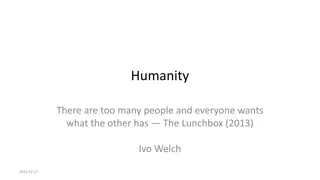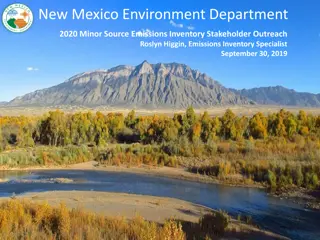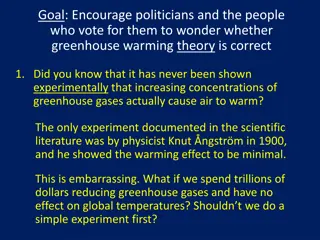CBAM: a perspective on emissions and global warming
Key considerations for Carbon Border Adjustment Mechanism (CBAM) and carbon pricing are discussed, emphasizing the complexity and inertia of transitioning to a low-emission economy, the need for durable emission reduction solutions, and the impact of non-optimal temperatures on global mortality rates. The discussion challenges the efficacy of carbon pricing as the primary tool for decarbonization and points towards a holistic approach for successful transition.
Download Presentation

Please find below an Image/Link to download the presentation.
The content on the website is provided AS IS for your information and personal use only. It may not be sold, licensed, or shared on other websites without obtaining consent from the author.If you encounter any issues during the download, it is possible that the publisher has removed the file from their server.
You are allowed to download the files provided on this website for personal or commercial use, subject to the condition that they are used lawfully. All files are the property of their respective owners.
The content on the website is provided AS IS for your information and personal use only. It may not be sold, licensed, or shared on other websites without obtaining consent from the author.
E N D
Presentation Transcript
CBAM: a perspective on emissions and global warming V. Anantha Nageswaran 6th December 2023
Key considerations for CBAM, Carbon Pricing and for the obsession with emissions the assumption of swift and cost-efficient transfer from high to low-emitting economic activity disregards the immense inertia that defines our fossil-fuel based economy, particularly within industrial sectors like cement and steel both of which are carbon-intensive and necessary materials for decarbonised infrastructure, from renewable transport to energy efficient homes by reducing the complexity of the challenge to a question of efficiency concerning a single issue reducing carbon emissions a misplaced emphasis on the efficiency achievable through the price mechanism ignores that some forms of carbon reduction are far more durable, effective (inasmuch as they swiftly and directly reduce emissions) and just than others. Carbon pricing does not allow society to discriminate between spurious uses of carbon such as sending billionaires into space and vital uses such as building the infrastructure for a non-carbon economy. In a successful transition, the first would be made impossible, the second as cheap as possible. As such, a unique carbon price becomes a clear pathway to failure. the appropriate time for a carbon price is toward the tail-end of the decarbonisation process, rather than as an early and primary tool. as Gareth Bryant argues in his masterful book on the political economy of carbon markets, economic notions of market failure tend to displace attention away from the origins of, and disperse responsibility for addressing, climate change. Source: Verbatim extracts from Adrienne Buller: The Value of a Whale: On the illusions of green capitalism
Emissions, Warming and Trade-Offs From 2000 03 to 2016 19, the global cold-related excess death ratio changed by 0 51 percentage points (95% eCI 0 61 to 0 42) and the global heat-related excess death ratio increased by 0 21 percentage points (0 13 0 31), leading to a net reduction in the overall ratio. Source: Lancet paper cited below Source: https://twitter.com/BjornLomborg/status/1483775027015213056 (Jan. 2022) Original source: https://www.thelancet.com/journals/lanplh/article/PIIS2542-5196(21)00081-4/fulltext This is when population is held constant (since pop growing and aging, it is likely that both cold and heat deaths are increasing, but this is because of growing and aging)
Globally, 5083173 deaths (95% eCI 4 087 967 5 965 520) were associated with non-optimal temperatures per year, consisting of 4 594 098 cold-related deaths (3 337 222 5 640 617) and 489 075 heat-related deaths (304 216 732 518; table 1). [9.43% vs. 0.91%] Source: As in the previous slide Source: https://twitter.com/BjornLomborg/status/1483775042060267520 (Jan. 19, 2022) Original source: as in the previous slide
The case of India.. Source: https://twitter.com/bjornlomborg/status/1136762380006952960 (June 2019) Original: https://journals.plos.org/plosmedicine/article/figure?id=10.1371/journal.pmed.1002619.t002 ( Mortality attributable to hot and cold ambient temperatures in India: a nationally representative case-crossover study Table 2
Adaptation matters Mortality due to extreme temperatures is one of the most worrying impacts of climate change. In this analysis, we use historic mortality and temperature data from 106 cities in the United States to develop a model that predicts deaths attributable to temperature. With this model and projections of future temperature from climate models, we estimate temperature- related deaths in the United States due to climate change, changing demographics, and adaptation. We find that temperature-related deaths increase rapidly as the climate warms, but this is mainly due to an expanding and aging population. For global average warming below 3 C above pre-industrial levels, we find that climate change slightly reduces temperature-related mortality in the U.S. because the reduction of cold- related mortality exceeds the increase in heat-related deaths. Above 3 C warming, whether the increase in heat-related deaths exceeds the decrease in cold-related deaths depends on the level of adaptation. Southern U.S. cities are already well adapted to hot temperatures and the reduction of cold-related mortality drives overall lower mortality. Cities in the Northern U.S. are not well adapted to high temperatures, so the increase in heat-related mortality exceeds the reduction in cold-related mortality. Thus, while the total number of climate-related mortality may not change much, climate change will shift mortality in the U.S. to higher latitudes. Source: (Jangho Lee and Andrew E. Dessler): Future Temperature-Related Deaths in the U.S.: The Impact of Climate Change, Demographics, and Adaptation 15th August 2023 (https://doi.org/10.1029/2023GH000799)
We are doing better than others "India has significantly developed its climate actions, resulting in a path to achieving its NDC well before 2030. It is the only G20 nation in line with 2 degrees warming compared to its fair share contribution to climate action (Climate Action Tracker 2021). However, these efforts have been mainly due to public initiatives (Deloitte, 2021)." Source: IFC Report on Blended Finance in India, p. 17 (Sept. 2023)
